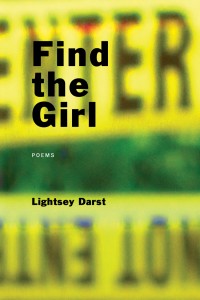Many thanks to everyone who came to Words at WAM last Wednesday!
Much gratitude to our partners-in-crime, WAM Collective, featured readers Miles Walser and Lightsey Darst, social hour musician Patrick Hertz, and photographer Lauren Tallarita.
Extra-special props to our awesome open mic-ers: Becky Liestman, Cindra Halm, Timothy Otte, Mason Nunemaker, Patrick Nathan, Nadia Serena, Jeffrey Ellinger, Susan Budig, Robert Kipp, Scott Vetsch, Sacha Chandarong, Jeffrey Skemp, Katharine Hargreaves, Jeffrey Watson, and Zac Kamm.
And to the five we didn’t get to, due to that ANNOYING THING CALLED TIME, we can’t wait to hear you next time (right?!): Scott Heins, Dan Forke, Shane Blegen, Dylan Hester, and Stephanie Nusser.
Fantastic night all around.
[portfolio_slideshow]
All photos by Lauren Tallarita. (Even more photos here!)
(We will shortly be en route to Chicago for that little thing called AWP (!!). That said, in order to keep ourselves sane, there will not be a What We’re Reading post tomorrow. Our sincere apologies, folks. In lieu of flowers, please send vials filled tears.)
What We’re Reading: Find the Girl by Lightsey Darst


Lightsey Darst’s Find the Girl (Coffee House Press; 2010) is not a collection to be read hastily or casually. I made that mistake when I first sat down with the collection, and struggled to connect with the poems. It wasn’t until I really dug into the collection that I found the threads that tie all the poems together. Darst’s collection isn’t for everyone, but for those readers whose tastes are bold, and those writers interested in pushing the boundaries of form, Find the Girl is recommended reading.
The first thing I noticed when flipping through the book was that many of the titles were typeset in brackets, and many poems broken apart by small stars. Lines are broken by other symbols and typographic elements such as italics and tabbed spaces. Take “Tunnel,” for instance, which begins:
She calls
for help, but> girl in your red
apron (sexy thing): ethics elsewhere—an old man
The symbols serve to break apart the text and fracture the images, which was, for me, a turn off during my first reading. What I discovered upon subsequent readings was that image fracture and the breaking apart of the poem are exactly what Darst is trying to do. “Tunnel” goes on to describe a girl being assaulted in a tunnel after deciding “to save a / minute” by taking a short cut. Each typographic fracture acts as the tunnel in question: there’s the girl’s life before the tunnel, and her life after, broken in the middle by what happens between one side and the other, what happens between the brackets.
Reading these poems together allows the themes of violence/horror, girl/womanhood, and gossip/bullying to build until each poem feels like a continuation of the last. Each piece doesn’t fit together neatly, fracturing the larger whole just as the poems themselves are fractured, but the reading experience is rewarding if the reader allows the time necessary to dig in. Once the reader accepts that Darst isn’t going to make the reading easy and succumbs to the logic of the poems, the visceral images begin to leap off the page.
Darst’s frank and urgent poems aren’t for everyone, but I found myself quite taken with the collection the more I read. The poems live in a fragmented corner of modernest poetry, and in the same tradition of Adrianne Rich and Dorianne Laux, though perhaps slightly harder to approach. I look forward to Darst’s future work.
What books or poets did you struggle to enjoy at first, but eventually proved to be rewarding reads?





